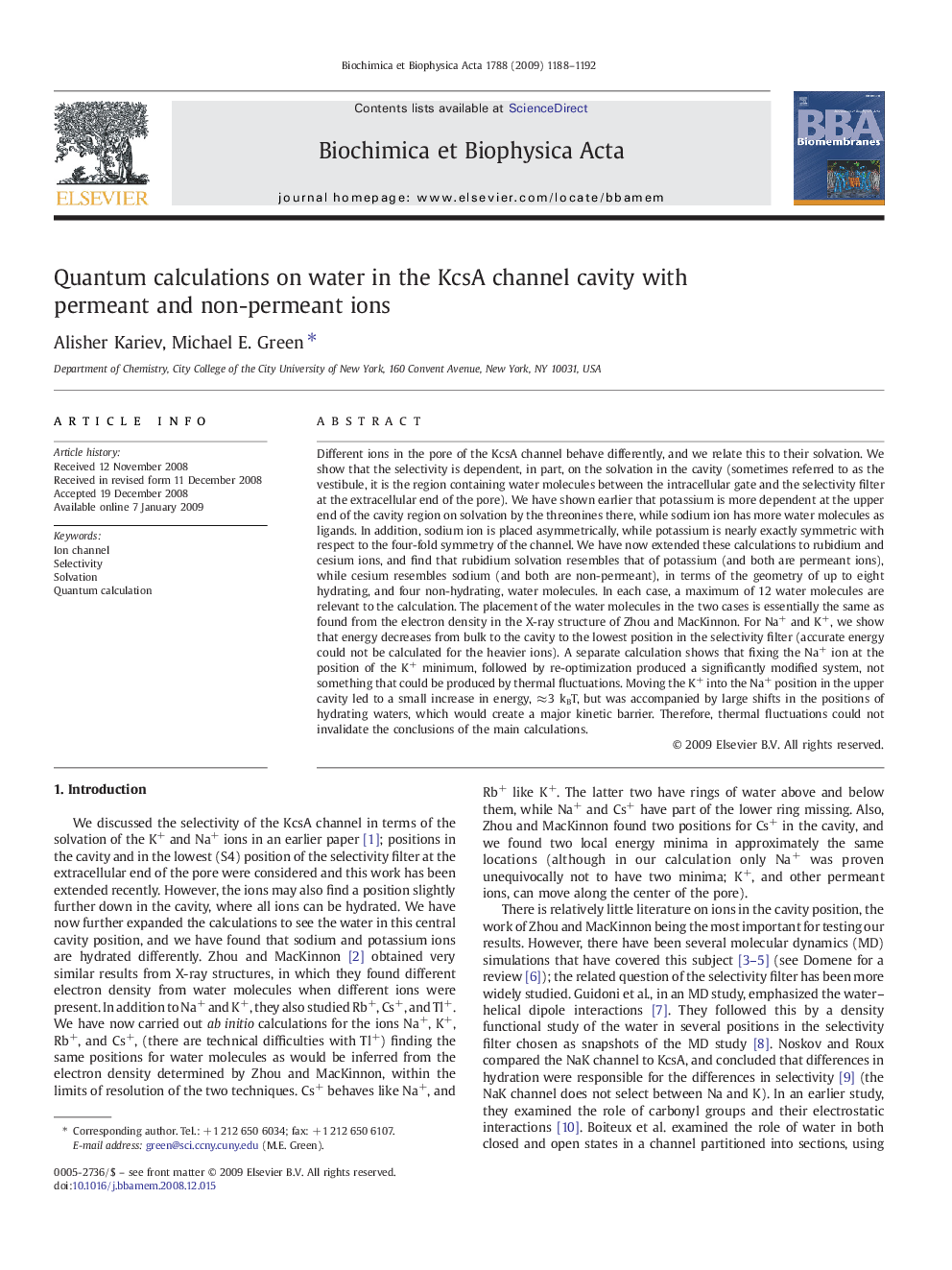| کد مقاله | کد نشریه | سال انتشار | مقاله انگلیسی | نسخه تمام متن |
|---|---|---|---|---|
| 1945196 | 1053255 | 2009 | 5 صفحه PDF | دانلود رایگان |

Different ions in the pore of the KcsA channel behave differently, and we relate this to their solvation. We show that the selectivity is dependent, in part, on the solvation in the cavity (sometimes referred to as the vestibule, it is the region containing water molecules between the intracellular gate and the selectivity filter at the extracellular end of the pore). We have shown earlier that potassium is more dependent at the upper end of the cavity region on solvation by the threonines there, while sodium ion has more water molecules as ligands. In addition, sodium ion is placed asymmetrically, while potassium is nearly exactly symmetric with respect to the four-fold symmetry of the channel. We have now extended these calculations to rubidium and cesium ions, and find that rubidium solvation resembles that of potassium (and both are permeant ions), while cesium resembles sodium (and both are non-permeant), in terms of the geometry of up to eight hydrating, and four non-hydrating, water molecules. In each case, a maximum of 12 water molecules are relevant to the calculation. The placement of the water molecules in the two cases is essentially the same as found from the electron density in the X-ray structure of Zhou and MacKinnon. For Na+ and K+, we show that energy decreases from bulk to the cavity to the lowest position in the selectivity filter (accurate energy could not be calculated for the heavier ions). A separate calculation shows that fixing the Na+ ion at the position of the K+ minimum, followed by re-optimization produced a significantly modified system, not something that could be produced by thermal fluctuations. Moving the K+ into the Na+ position in the upper cavity led to a small increase in energy, ≈ 3 kBT, but was accompanied by large shifts in the positions of hydrating waters, which would create a major kinetic barrier. Therefore, thermal fluctuations could not invalidate the conclusions of the main calculations.
Journal: Biochimica et Biophysica Acta (BBA) - Biomembranes - Volume 1788, Issue 5, May 2009, Pages 1188–1192